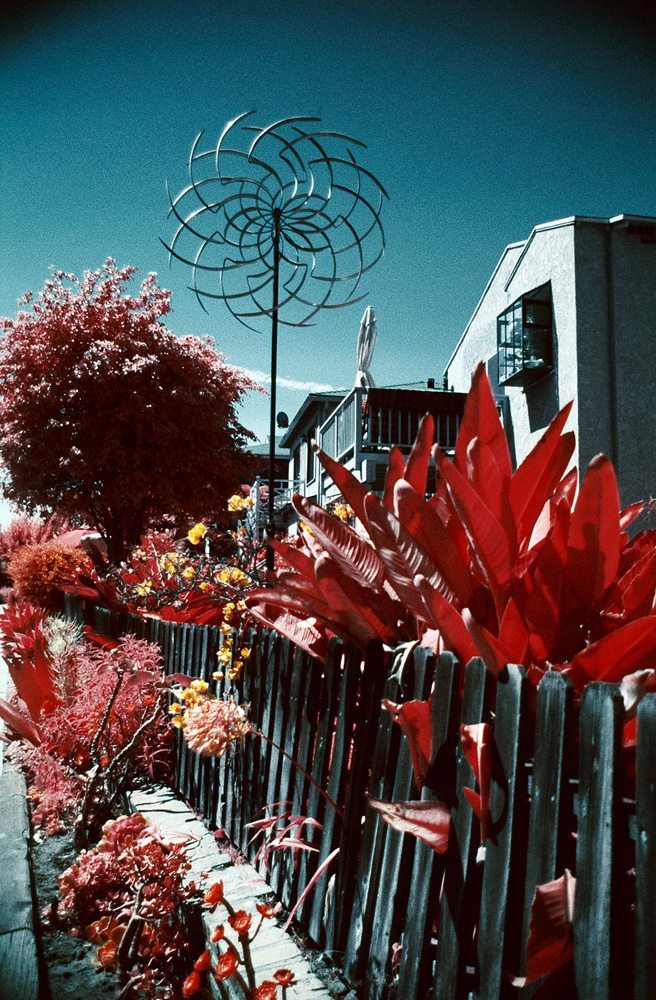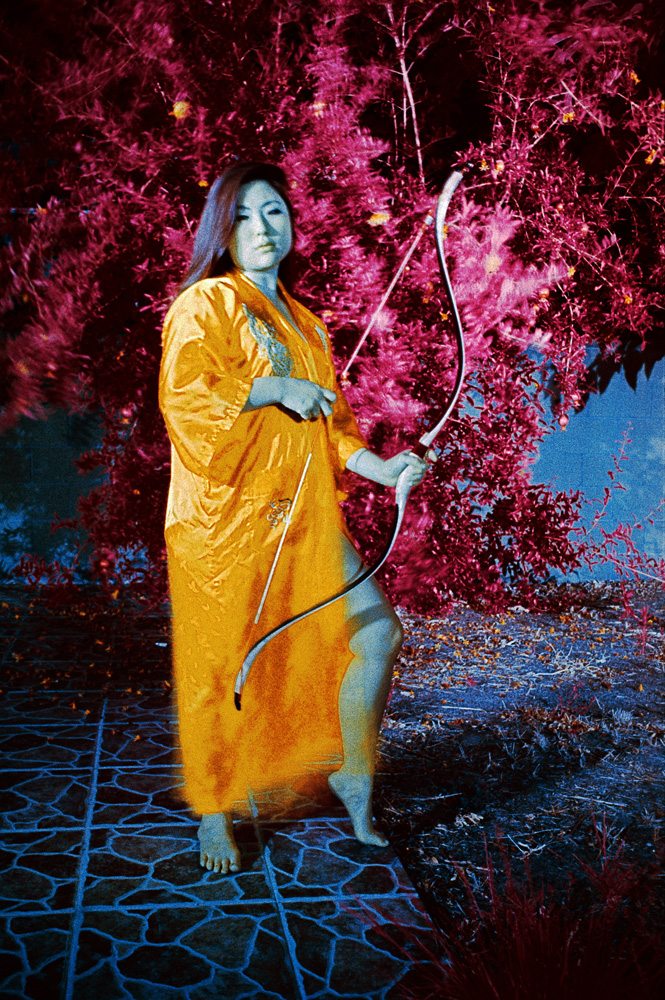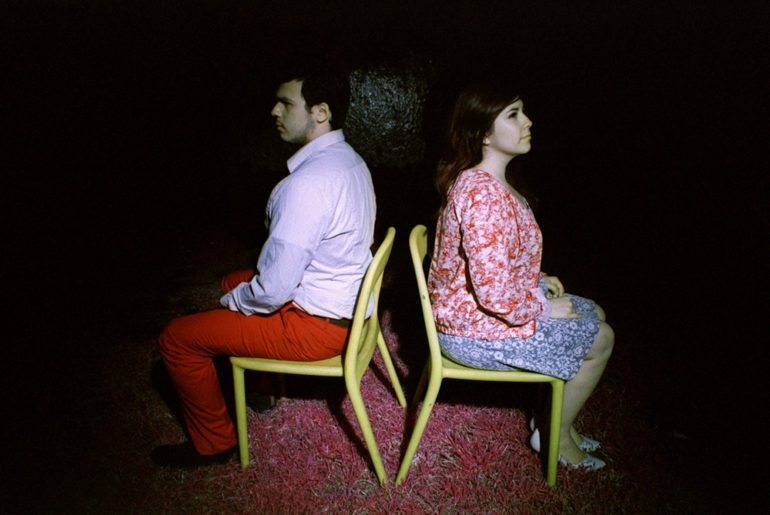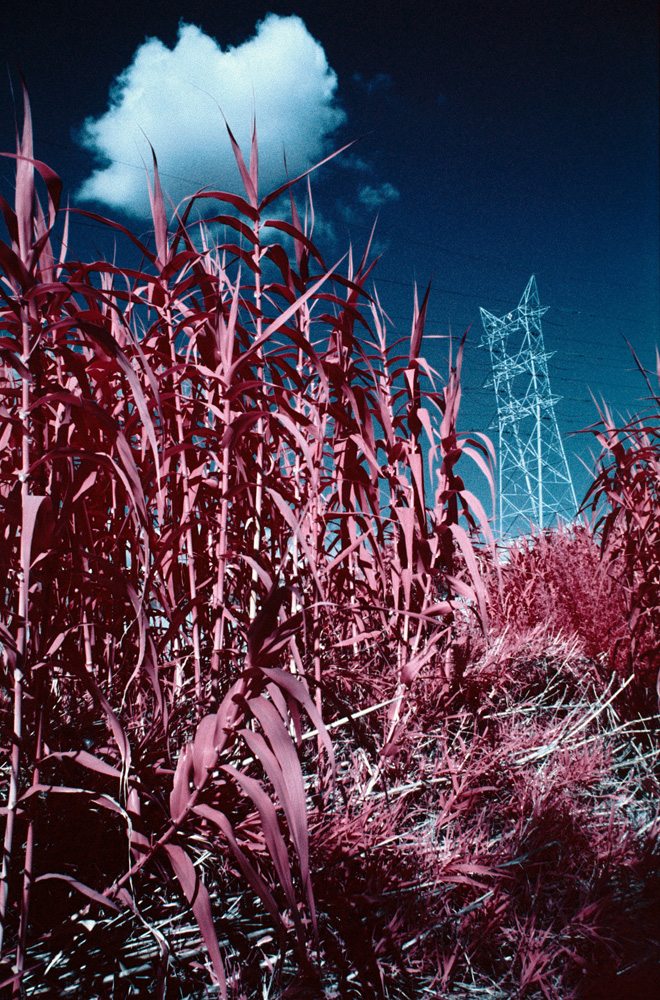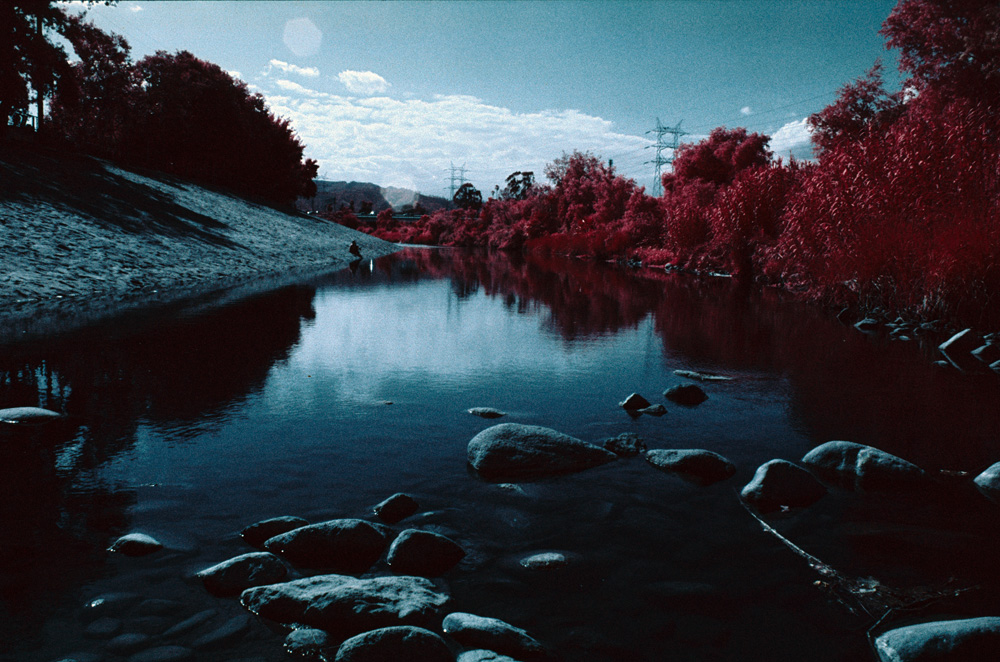Last Updated on 03/17/2023 by Lara Carretero
All images by Nick Seaney. Used with permission. Lead photo done in E-6.
Photography Nick Seaney has been shooting film for a very long time, and like many photographers he returned to film again because he hated sitting in front of a computer afterwards to edit. When he finally had a chance to play with the amazing Kodak Aerochrome infrared film, he was ecstatic to experiment with it and figure out all the cool possibilities is has.
For those not in the know, Aerochrome is an infrared film developed for use by the US Military to find guerrilla forces in places like the Congo. However, it’s been used by other photographers for more creative and interesting uses.
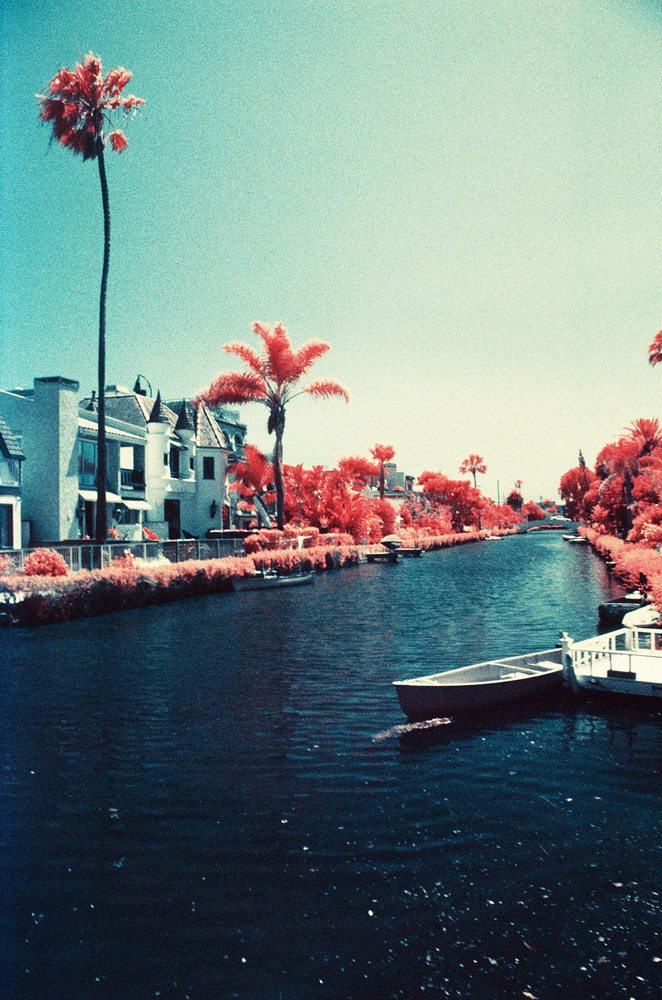
Phoblographer: Talk to us about how you got into photography.
Nick: I got into photography when I was in high school and took a black-and-white darkroom photography class. We got to shoot, develop, and print our work and I fell in love. I’d never given much thought to photography as an art form before but I learned a lot and it made me realize that image-making was what I want to do with my life. I’m a Videographer by trade but photography helps me keep my eye sharp.
Phoblographer: Why do you shoot film?
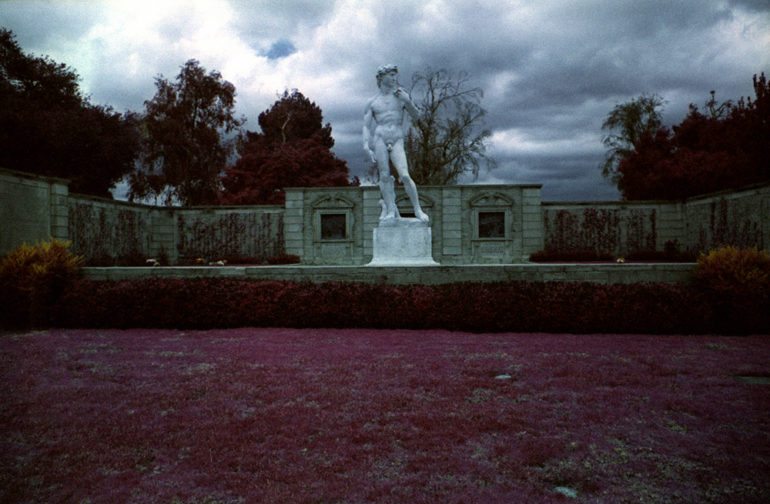
Film type: 135.
Lens serial number: .
Film manufacturer: Kodak.
Film name: Aerochrome III 1443.
Alias: .
Developer: K-2.
Developer maker: Unicolor.
Process: C-41.
Developer dilution: .
Developing time: 3:45 at 92ºF.
Processing laboratory: Self-processed.
Laboratory address: .
Filter(s) used: Rolev Orange Filter.
Scanner manufacturer: Canon.
Nick: I shoot film because it’s what I originally started with. I went digital like most people and never looked back. But after a few years of disappointment with the images I was getting, and my distaste for the amount of time spent sitting on a computer to get what I wanted, I decided to try film again. It really took me back to the original principles I’d learned in high school all those years ago.
Like everyone who shoots film says, it slows me down and makes me think about the shot I want because now, the photo I’m taking is no longer free. I’m also in love with the science of it all. Taking this emulsion that’s spread onto a plastic base, exposing it to light, running it through some chemicals, and getting an image. It’s fascinating and a real joy to me when I see my pictures for the first time hours or days later.
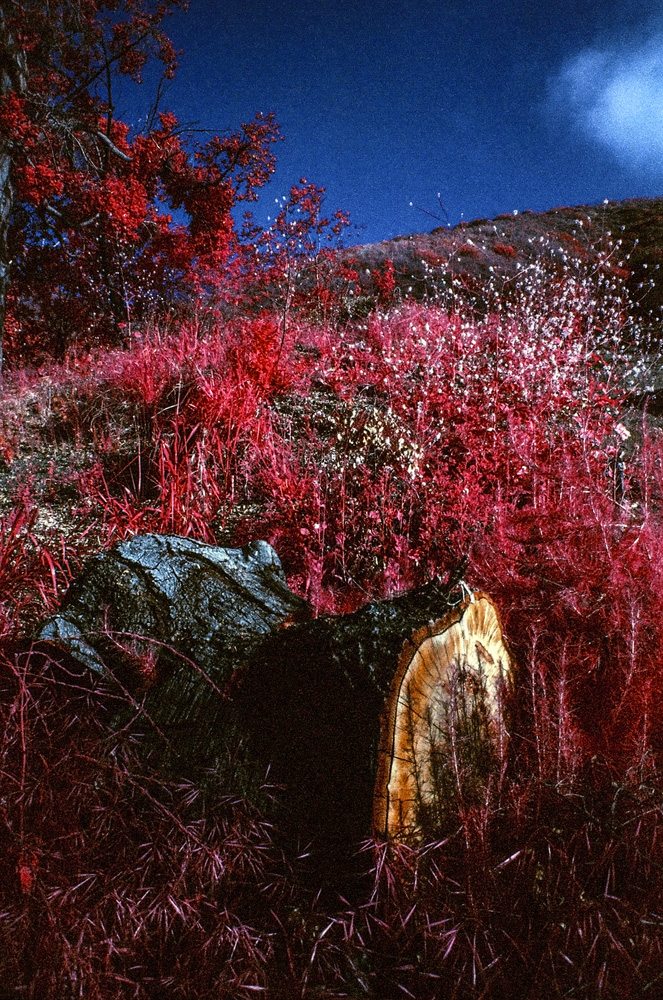
Phoblographer: So talk to us about your love of Aerochrome. We know that it’s an infrared film that does weird things, but why do you choose it as a creative tool?
Nick: Aerochrome always intrigued me when I’d see images made with it in photography magazines in the early 2000s but I never had access to it. When I came back to film last year, I was crushed to know that it’d been discontinued in 2007. Then I learned that Film Photography Project had a bunch for sale so I decided to give a roll a try. I was instantly hooked.
“I went digital like most people and never looked back. But after a few years of disappointment with the images I was getting, and my distaste for the amount of time spent sitting on a computer to get what I wanted, I decided to try film again.”
I use it primarily because its look is just so unique. There is no other film like it at all. It instantly takes almost any scene and makes it interesting.
Phoblographer: When you go about taking pictures of scenes, what’s your mentality and thought process usually like when working with this film vs standard daylight/tungsten film?
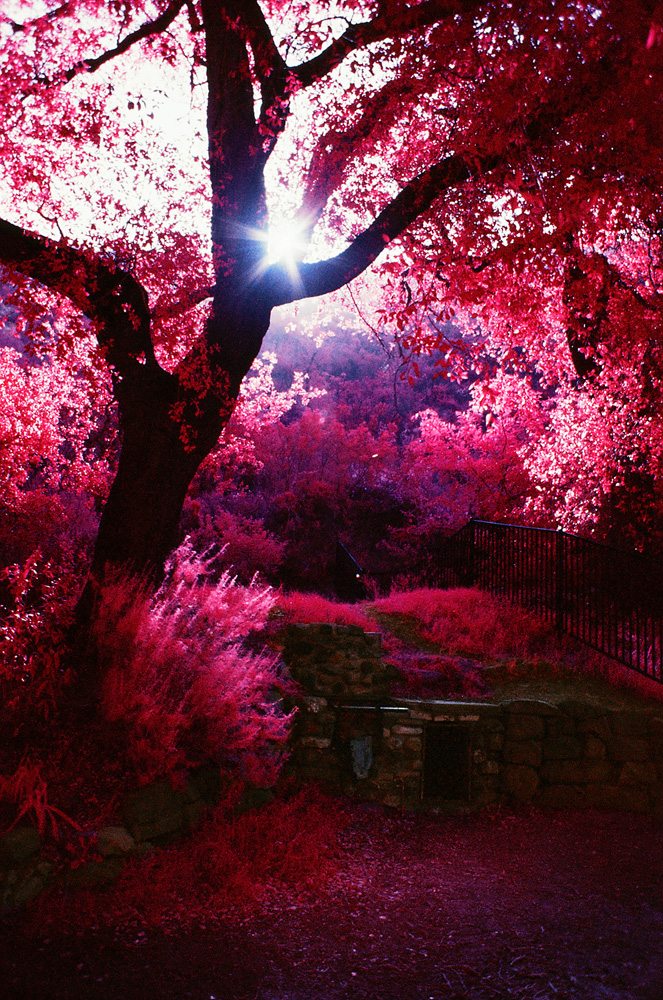
Film type: 135.
Lens serial number: C57874.
Film manufacturer: Kodak.
Film name: Aerochrome III.
Process: E-6.
Processing laboratory: The Darkroom.
Laboratory address: 946-A Calle Amanecer, San Clemente, CA.
Exposure number: 1.
Filter(s) used: Tiffen Yellow 12.
Nick: Because the film has such a limited dynamic range, and the fact that at the very least you need to use a Yellow 12 filter over the lens at all times (which blocks light below 500nm), shadow areas tend to fall into a much deeper black. That makes high contrast scenes much more difficult to capture. To a certain extent I also have to be aware of the health of the vegetation in my scene. This film’s infrared characteristics respond to the infrared reflection of light from the chlorophyll in healthy plants. Therefore, dead plants do not look good with this stock.
Then there’s the consideration of whether or not I’ll be cross-processing the film. When processed as C-41, you still get the infrared look but with a lot less of the saturation, overall blue cast, and high-contrast characteristics of processing as E-6. In this way you tend to get more detail in the image but you kind of lose some of the magical otherworldly qualities too. You also have to meter at 320 or even 250 when cross-processing instead of 400. Any critical work I will always bracket normal/+1/-1.
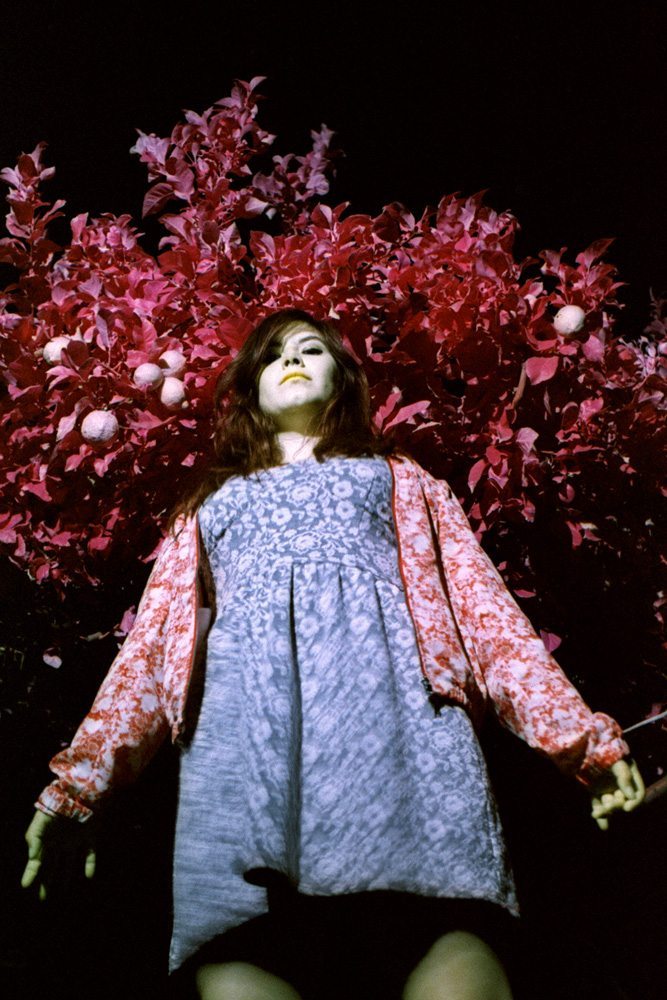
Film type: 135.
Lens serial number: .
Film manufacturer: Kodak.
Film name: Aerochrome III 1443.
Alias: .
Developer: K-2.
Developer maker: Unicolor.
Process: C-41.
Developer dilution: .
Developing time: 3:45 at 92ºF.
Processing laboratory: Self-processed.
Laboratory address: .
Filter(s) used: Rolev Orange Filter, Wratten CC50C.
Scanner manufacturer: Canon.
Phoblographer: Not only have you shot landscapes with this stuff, but you’ve also done a bit of portraiture. What’s it like shooting portraits with this film vs landscapes? I’d assume portraiture allows you to have more creative freedom overall. What’s it like working with a flash and this film?
Nick: The portraiture stuff I’ve done came about because of an obsession with wanting to try this film at night. I’d never seen it done before and took it upon myself to give it a shot. I read all the data sheets and even spoke to someone at Kodak for some insight. I decided that if I was going to go all out, I might as well end up with some interesting pictures instead of just another landscape.
I read in the data sheets that tungsten lights or flash may be used as an alternate source of illumination to sunlight. I’m not experienced with flash photography at all really but I did have a kit of continuous tungsten cinema lights that I could use.
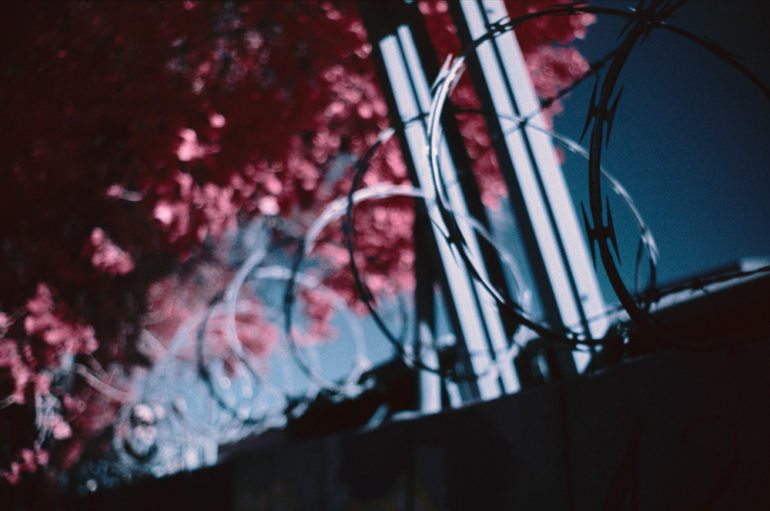
For me it was easier to light the scenes because I could instantly see the changes I was making in real-time. I only wish I’d had more tools with me to control spill. My first experiment was shot with the intention of cross-processing as a negative and the second as a slide. I incident metered for the chosen film speed, plus exposure compensation for filter factor, and bracketed all my shots. I find that if you’re going to shoot any portraiture with this film, cross-processing is the way to go. You can get a closer to normal color balance and skin tones, whereas the blue cast left on the film during the E-6 process is neither flattering nor easy to color correct.
Phoblographer: What are some of the hardest lessons you’ve learned when shooting with this film?
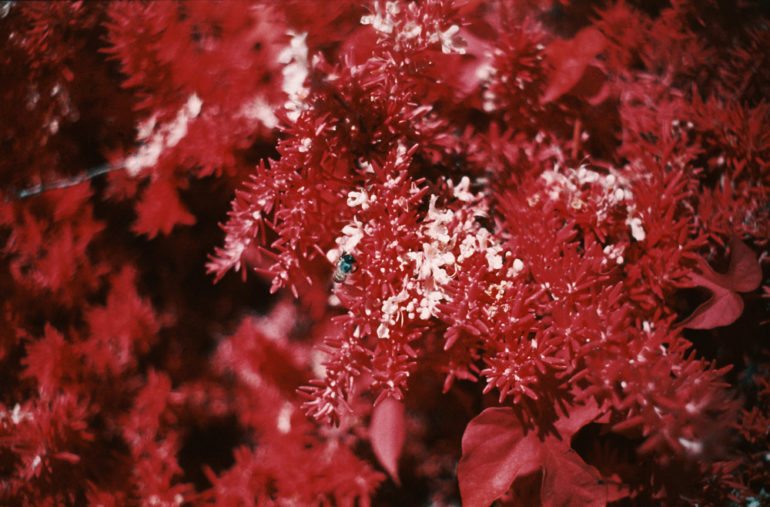
Nick: I’ve been pretty lucky so far that following the basic standard practices with this film has worked out well for me. However, I will say that if you’re going to load this in complete darkness, make sure the leader catches on the take-up spool. I’m sure some of those photos I took at the Grand Canyon would have looked pretty cool if I’d actually taken any.
Phoblographer: Talk to us about the gear that you use. What makes it just right for you?
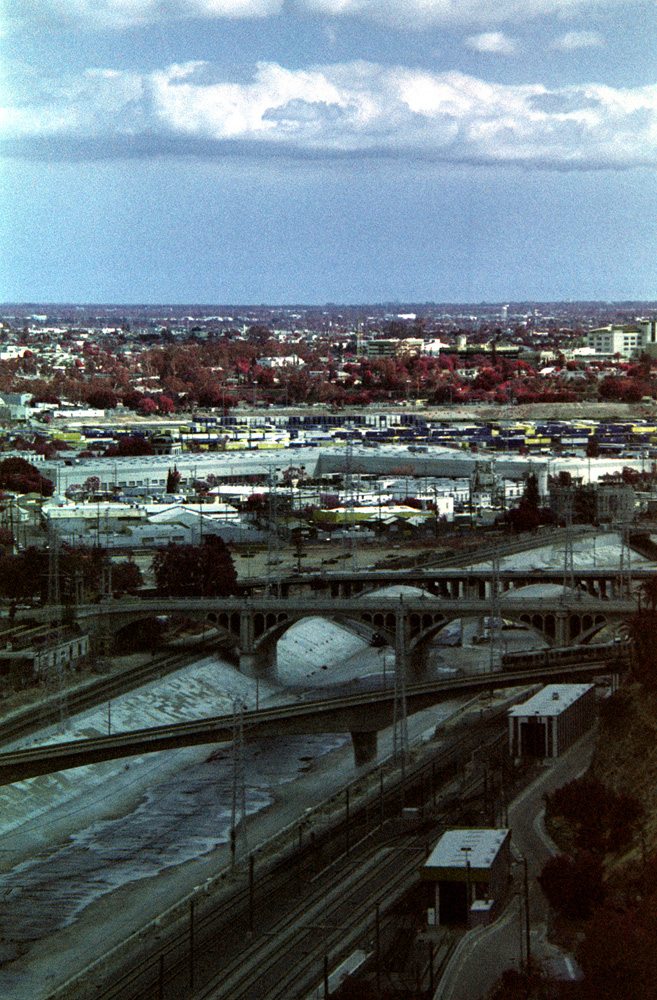
Film type: 135.
Lens serial number: .
Film manufacturer: Kodak.
Film name: Aerochrome III 1443.
Alias: .
Developer: K-2.
Developer maker: Unicolor.
Process: C-41.
Developer dilution: .
Developing time: 3:45 at 92ºF.
Processing laboratory: Self-processed.
Laboratory address: .
Filter(s) used: Rolev Orange Filter.
Scanner manufacturer: Canon.
Nick: I’m pretty simple when it comes to gear. I have a couple rangefinders and a TLR but I mostly shoot using an SLR. I stick with one brand so that all my lenses are interchangeable with the different bodies. In my case I like Minolta. They are kind of an unsung hero these days. Everyone knows Canon and Nikon because they’re still around but it was Minolta who first released cameras with aperture and shutter priorities on one body (XD11), first to offer a Program mode for inexperienced users (X700) and first to come out with autofocus (Maxxum line). I shoot mainly with an X570, though I just got and XD11 that’s in the shop, and I have an all mechanical SRT-MC so that I don’t have to rely on needing batteries. I mainly use a 28mm lens for landscapes, a 35 for street, and a 135 for portraiture or the occasional need for a telephoto.
Phoblographer: Have you ever tried to find a way to successfully duplicate the look in digital at all?
Nick: I have not tried to do it myself but I have seen some very convincing examples. It’s pretty cool what people are able to accomplish. It’s a shame that eventually digital is the only way we’ll be able to create this look.
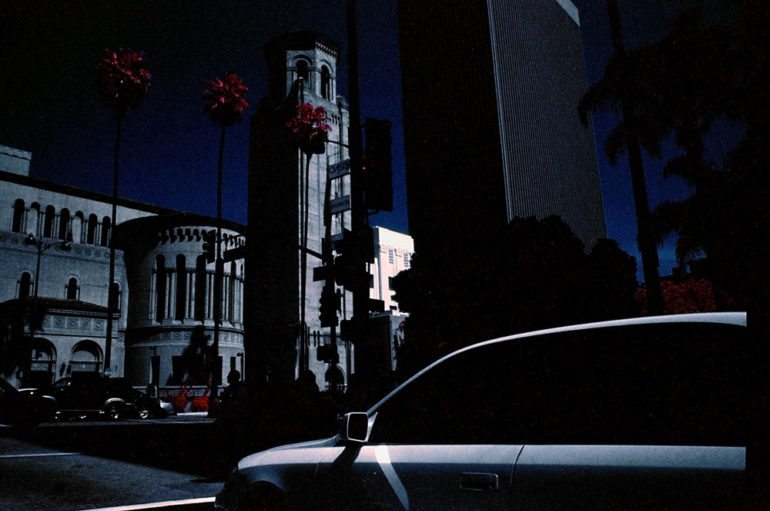
Film type: 135.
Lens serial number: C57874.
Film manufacturer: Kodak.
Film name: Aerochrome III.
Process: E-6.
Processing laboratory: The Darkroom.
Laboratory address: 946-A Calle Amanecer, San Clemente, CA.
Exposure number: 1.
Filter(s) used: Tiffen Yellow 12.
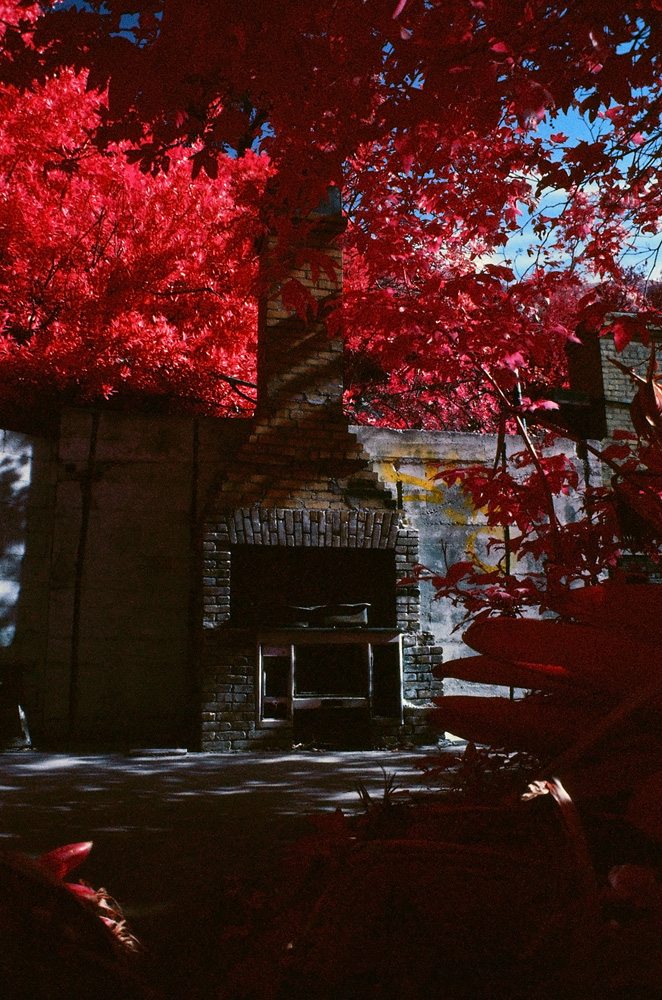
Film type: 135.
Lens serial number: C57874.
Film manufacturer: Kodak.
Film name: Aerochrome III.
Process: E-6.
Processing laboratory: The Darkroom.
Laboratory address: 946-A Calle Amanecer, San Clemente, CA.
Exposure number: 1.
Filter(s) used: Tiffen Yellow 12.
